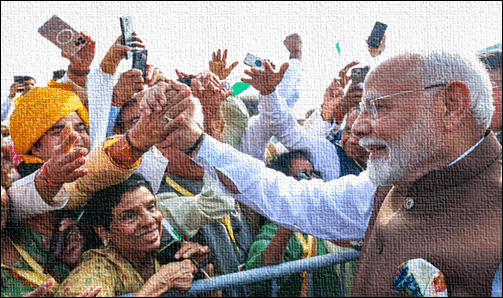Enhancing Good Governance Through Digitalisation

Good governance is essential for the well-being of citizens. The United Nations defines good governance as participatory, accountable, transparent, and inclusive. It emphasizes the importance of citizen involvement in governance processes. The ultimate goal is to ensure that every citizen experiences an improved quality of life. In India, the concept of “Ease of Living” has emerged as a key pillar of good governance. This framework aims to enhance the well-being of citizens by simplifying processes and leveraging technology. By focusing on inclusivity and accessibility, the government strives to ensure that the benefits of good governance reach everyone, even in remote areas.
The Role of Digitalisation in Good Governance
Digitalisation has transformed governance in India. It enhances transparency, efficiency, and accessibility, allowing citizens to lead dignified lives. One notable example is the story of Mr. Sureshbhai Patel, a small farmer from Dadra and Nagar Haveli. When he needed an income certificate for his child’s school, he faced numerous challenges. However, after visiting the Saral Sewa Kendra (SSK) at his village panchayat office, he received guidance on the process. The SSK operator helped him obtain both his income certificate and his child’s birth certificate. This experience not only saved him time and money but also enabled his child to receive a scholarship due to timely document submission.
Digitalisation is at the heart of this governance revolution. The Digital India Land Records Modernization Programme (DILRMP) has digitized 95% of land records in rural India. This initiative has brought clarity and fairness to land ownership, which was often a source of conflict. By enhancing transparency and simplifying land management, digitalisation has reduced fraud and enabled quicker dispute resolution. Such initiatives demonstrate how technology can empower citizens and improve governance.
Platforms Empowering Citizens
Several digital platforms have emerged to make government services more accessible. One such platform is myScheme, which serves as a one-stop solution for citizens to discover and apply for government schemes. This platform eliminates the need to navigate multiple government websites or deal with complicated application processes. With just a few clicks, citizens can access the benefits they are eligible for, empowering them to improve their lives.
Aadhaar is another critical component of India’s governance transformation. It is integrated into over 2,240 social welfare schemes, ensuring secure and efficient delivery of benefits. Aadhaar’s widespread use across banking, insurance, and telecom sectors simplifies user authentication. This reduces fraud and enhances transparency, making governance more efficient. The government’s commitment to digital governance is evident in initiatives like the Amrit Gyaan Kosh, which curates best practices in governance and aligns them with Sustainable Development Goals (SDGs). This resource is available in multiple languages, ensuring accessibility for all.
Bridging the Digital Divide
The Indian government is also focused on bridging the digital divide. Efforts to bring digital connectivity to remote areas are crucial for inclusive governance. With the adoption of 5G technology, India is making significant strides in its digital transformation. The country boasts over 95% 4G coverage and 90% 5G coverage, making services more accessible. Key sectors such as manufacturing, healthcare, and agriculture will benefit from this technological advancement. The government’s initiatives create new opportunities for citizens to engage with services and participate in the digital economy.
Prime Minister Modi’s PRAGATI platform exemplifies the government’s commitment to proactive governance. It enables real-time monitoring of projects worth over ₹18 lakh crore, ensuring timely progress. The Aspirational Districts Program also highlights how digital tools can transform governance by addressing local challenges and promoting inclusive growth. Through these initiatives, India is not just building infrastructure but creating a framework for good governance that enhances the Ease of Living for its citizens.
India’s focus on digitalisation and inclusive policies is reshaping governance. By ensuring that every citizen has access to better opportunities, the government is paving the way for a more transparent and self-reliant nation. As India moves toward its vision of Viksit Bharat 2047, the emphasis on good governance and digitalisation will continue to transform lives and create a more accessible society.
Observer Voice is the one stop site for National, International news, Sports, Editor’s Choice, Art/culture contents, Quotes and much more. We also cover historical contents. Historical contents includes World History, Indian History, and what happened today. The website also covers Entertainment across the India and World.
Follow Us on Twitter, Instagram, Facebook, & LinkedIn

